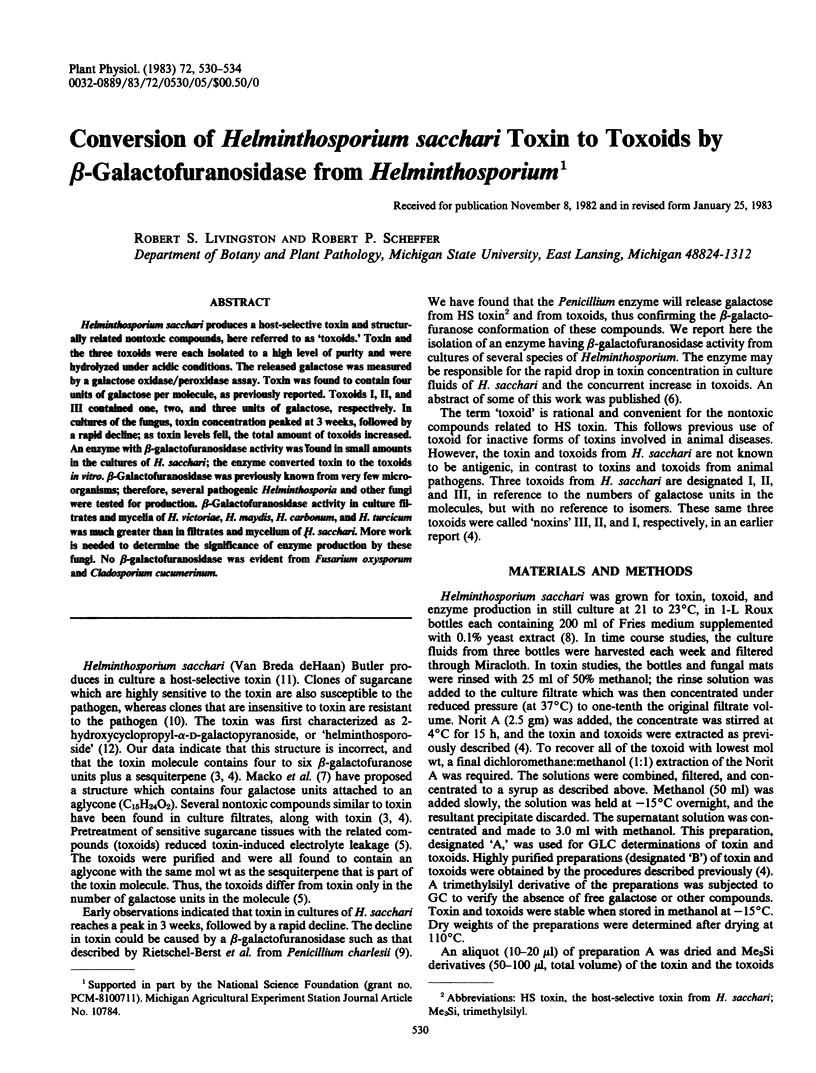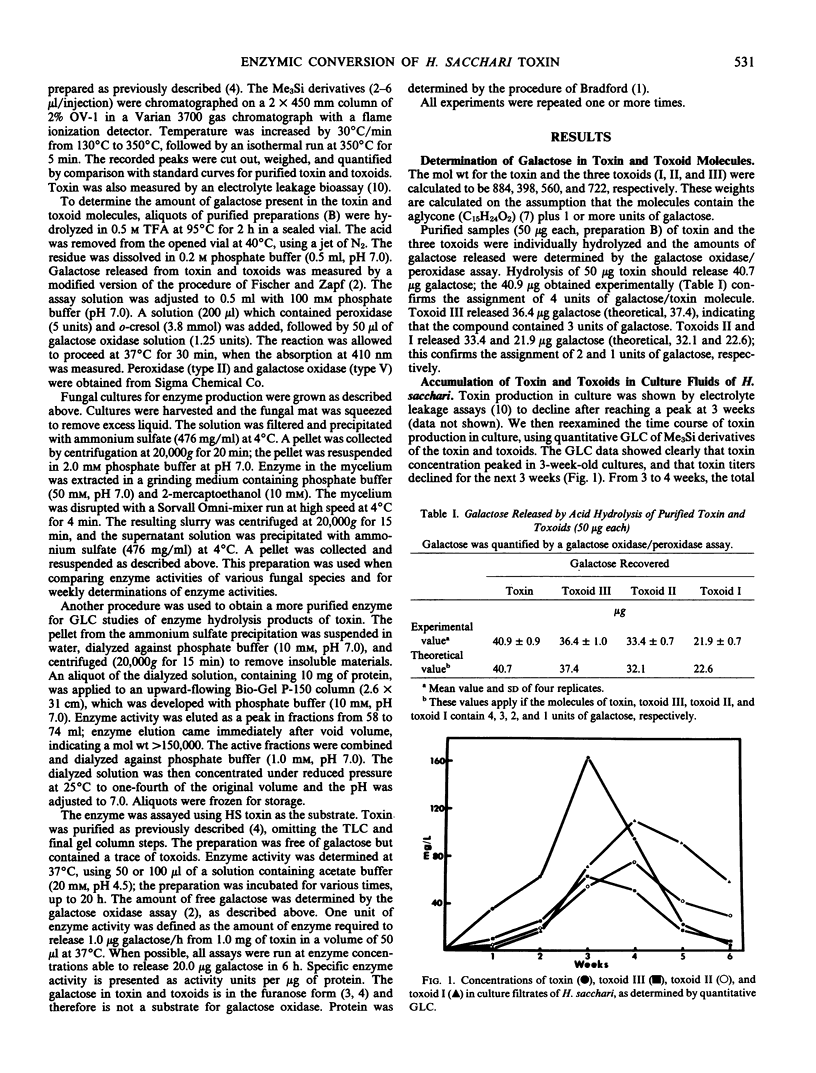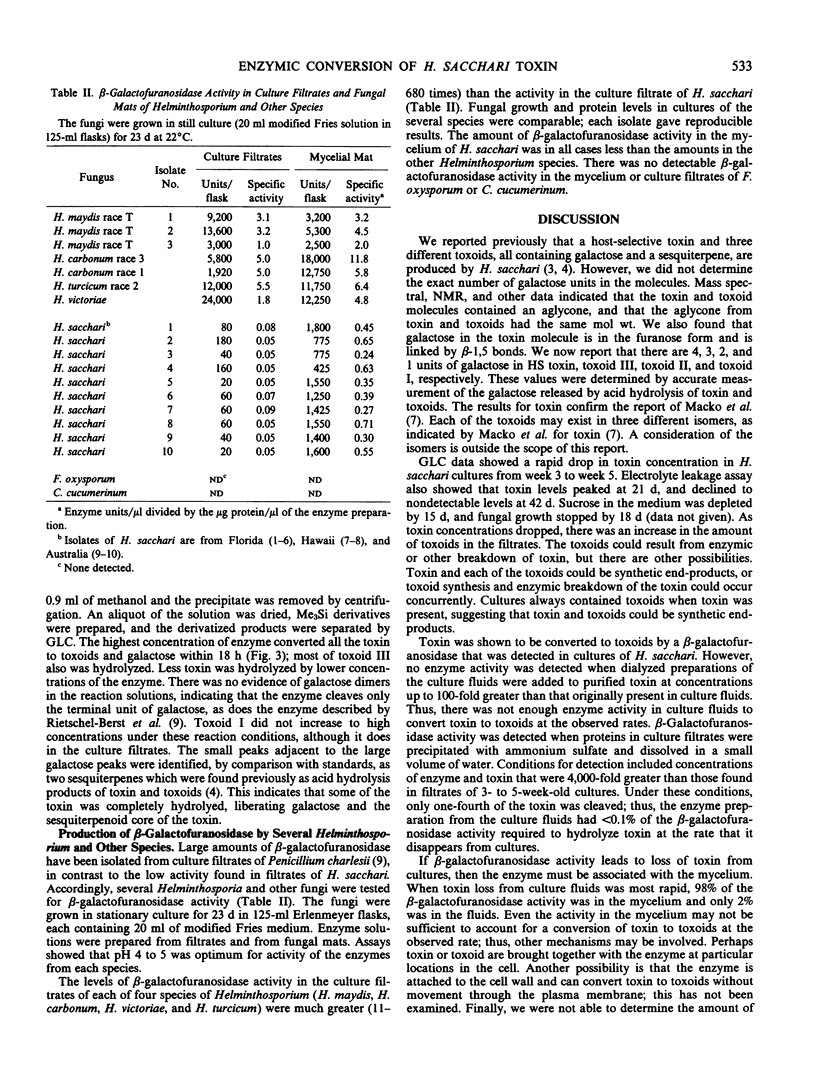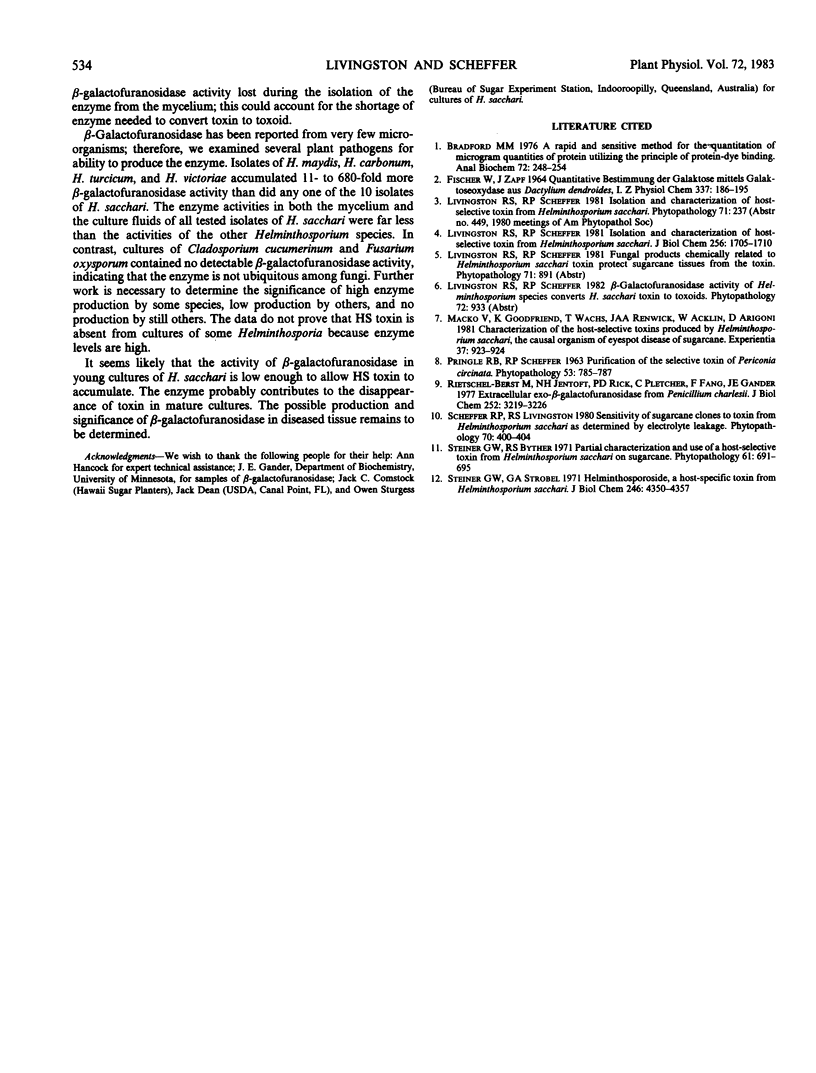Abstract
Helminthosporium sacchari produces a host-selective toxin and structurally related nontoxic compounds, here referred to as `toxoids.' Toxin and the three toxoids were each isolated to a high level of purity and were hydrolyzed under acidic conditions. The released galactose was measured by a galactose oxidase/peroxidase assay. Toxin was found to contain four units of galactose per molecule, as previously reported. Toxoids I, II, and III contained one, two, and three units of galactose, respectively. In cultures of the fungus, toxin concentration peaked at 3 weeks, followed by a rapid decline; as toxin levels fell, the total amount of toxoids increased. An enzyme with β-galactofuranosidase activity was found in small amounts in the cultures of H. sacchari; the enzyme converted toxin to the toxoids in vitro. β-Galactofuranosidase was previously known from very few micro-organisms; therefore, several pathogenic Helminthosporia and other fungi were tested for production. β-Galactofuranosidase activity in culture filtrates and mycelia of H. victoriae, H. maydis, H. carbonum, and H. turcicum was much greater than in filtrates and mycelium of H. sacchari. More work is needed to determine the significance of enzyme production by these fungi. No β-galactofuranosidase was evident from Fusarium oxysporum and Cladosporium cucumerinum.
Full text
PDF




Selected References
These references are in PubMed. This may not be the complete list of references from this article.
- Bradford M. M. A rapid and sensitive method for the quantitation of microgram quantities of protein utilizing the principle of protein-dye binding. Anal Biochem. 1976 May 7;72:248–254. doi: 10.1016/0003-2697(76)90527-3. [DOI] [PubMed] [Google Scholar]
- FISCHER W., ZAPF J. QUANTITATIVE BESTIMMUNG DER GALAKTOSE MITTELS GALATOSEOXYDASE AUS DACTYLIUM DENDROIDES. I. Hoppe Seylers Z Physiol Chem. 1964;337:186–195. doi: 10.1515/bchm2.1964.337.1.186. [DOI] [PubMed] [Google Scholar]
- Livingston R. S., Scheffer R. P. Isolation and characterization of host-selective toxin from Helminthosporium sacchari. J Biol Chem. 1981 Feb 25;256(4):1705–1710. [PubMed] [Google Scholar]
- Rietschel-Berst M., Jentoft N. H., Rick P. D., Pletcher C., Fang F., Gander J. E. Extracellular exo-beta-galactofuranosidase from Penicillium charlesii: isolation, purification, and properties. J Biol Chem. 1977 May 25;252(10):3219–3226. [PubMed] [Google Scholar]
- Steiner G. W., Strobel G. A. Helminthosporoside, a host-specific toxin from Helminthosporium sacchari. J Biol Chem. 1971 Jul 10;246(13):4350–4357. [PubMed] [Google Scholar]


